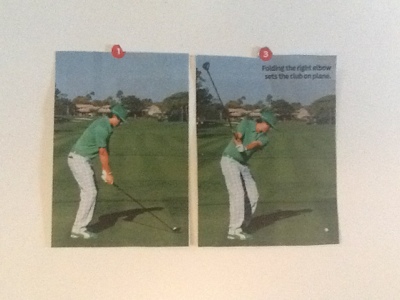Do you understand how the shafts in your irons effect your distance and accuracy ?
Here are the terms used to define the properties of golf shafts. 1) steel, 2) graphite, 3) flex,
4) torque, 5) flex point, 6) weight, 7) length, 8) frequency. Do these terms confuse you?
I got my first set of irons out of a barrel at K Mart. It really didn’t matter at that time about all of today’s advanced materials and specifications. Just buy some “good clubs”, and go play.
In terms of the advantages of today’s selection, my first set was barbaric. Heavyweight steel, stiff, standard length. Basically no selection. I didn’t complain because that was all I knew. I didn’t realize it at the time, but that set of irons was “light years” ahead of the wood shafts that the great players of the past had used so successfully. Just think of it. Wood shafts tended to warp, absorbed water, twisted when the ball was struck and usually did not match from club to club. What Bobby Jones was able to accomplish with the clubs that he played with is unbelievable!
We do know that the environment where golf grew up, may have suited the properties of wood shafts. Remember, they wore a lot of clothes so their swings were restricted. The type of swing they used was more “rotary” and flat in shape. Because the wood twisted much more than steel, the club had to be rotated at impact to square the face. They played a different kind of golf than we do.
When steel shafts were invented, the quality and playability was “light years” ahead of the old wood shafts. Amazingly, when steel shafts were produced, the shaft manufacturers painted the steel shafts brown to make them look more like wood shafts. Even when superior quality is invented people sometimes don’t want to change. Like life, it is wonderful that goodness usually wins out.
Today if you don’t have a 46 gram super ultra lite wight, 3.2 degree low torque, high bend point, 46″ shaft in your driver, you just can’t play! Just kidding, you should give yourself every advantage of this great technology.
The problem for myself as a club fitter, is that unconventional fitting processes can be so complicated that players don’t have the opportunity to take advantage of the fantastic potential results. For example, if you go to the golf store, you are generally presented with clubs that are X stiff, stiff, regular, senior and ladies flex. You will be stereotyped into one of these categories. If you are a senior or a lady, graphite shafts will also be offered. As a consumer you should always experiment with each type of shaft. Stereotyping you into one of these categories is easy for the sales person, but may not be the right thing for you.
What you may not realize, their is another completely different type of fitting available to higher level players that is not available to the average player. This fitting process is based on the theory of “shaft frequency”. It is time consuming, expensive and complicated, with only a few rare companies offering the process.
But, here is a basic example of why personalized frequency fitting is the ultimate. If you have one favorite iron in your set that you always hit well, it may be that this particular club vibrates at a frequency that suits the way you personally “load and unload” your swing.
As you know, in a standard set, the pitching wedge is the stiffest club in the set, (highest frequency), and the 3iron is the most flexible iron in the set, (lowest frequency). Each club has or should have its own frequency number. So if we can find the frequency number of your favorite iron, we could potentially build a set of irons with that frequency number, making all of the irons in the set your favorite frequency.
The possibilities are endless. But the most common application is with my wedges. I happen to like my wedges slightly lower frequency, (softer), because most of the shots you hit with your wedges are not full swings. I can really feel the head on less than full swings. The shaft recovers more slowly so I have complete control at impact.
I hope that this brief look into the world of shaft frequency fitting has not confused you. You can now start asking the applicable questions before making your next purchase. Be prepared for a confused look by your sales person. If they can’t answer the questions, find someone who can !
Practice slowly and deliberately.

